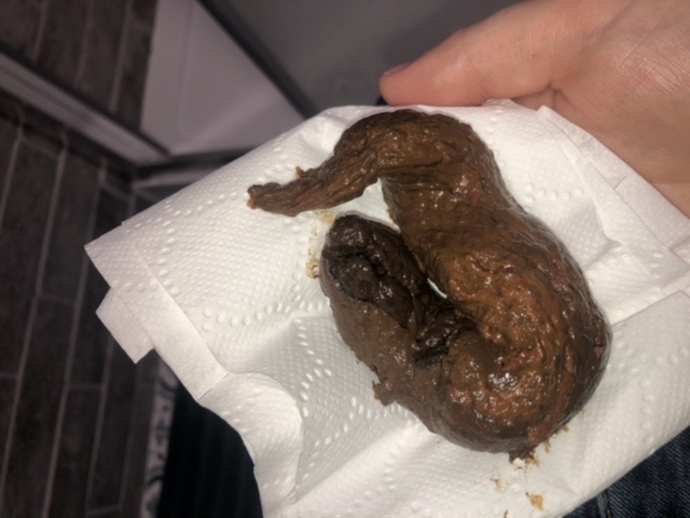

Regular repeat testing for pinworm should be conducted at monthly intervals to monitor for reinfection in susceptible patient populations. As such, our Pinworm test kit includes three collection paddles. We highly recommend that samples be collected on three consecutive days to improve the chances for detection. Collection of samples on three consecutive days is the generally recommended protocol. As with any other intestinal parasite test, more than one sample is preferred to rule out the possibility of infection. Samples should be collected before treatment begins and after treatment is complete to confirm eradication. This should be done first thing in the morning, before showering or using the toilet, to maximize the chances of egg recovery.
Pin worms in poop skin#
When enterobiasis is suspected, patients should be instructed to collect eggs by gently pressing the sticky side of the collection paddle against the perianal skin folds. The paddle has adhesive material on one side and is commonly used for pinworm testing. The Swube ™ pinworm paddle is among these alternative methods. 2 Because eggs are not mixed in with the fecal matter, as is the case for most intestinal parasites, other methods of diagnosis have been developed. While eggs can be seen in stool on occasion, this is not a reliable method for detecting pinworms. Since the life cycle of the parasite involves the external migration of the female to lay the eggs in the perianal region, stool samples are not recommended for pinworm testing. Eggs are infective within hours after being deposited by the female worm, causing the disease to be easily transmitted.Įnterobiasis is a group infection, common in families, child care centers and hospitals as it spreads easily. Other symptoms that have been related to pinworm infection, especially in children, are insomnia and nervousness. 4 It has been reported that, for most people, itching is the only noticeable symptom, and many people harboring the worms will be completely asymptomatic. 2,3 The presence of these eggs may cause itching, a common symptom, and scratching of the area may result in scarification.

2,4 Typically at night, the adult female worms migrate out of the anus and deposit eggs on the perianal skin. When pinworm eggs reach the intestines, they hatch and the larvae mature into adult female or male worms that live in the cecum, appendix, and colon.

People develop enterobiasis after the ingestion or inhalation of infective eggs via contaminated hands or fomites. It is more frequently observed in children and is the most common roundworm infection in the United States with an estimated 40 million people infected. Enterobius vermicularis, also known as pinworm, is a parasitic infection of worldwide distribution.


 0 kommentar(er)
0 kommentar(er)
